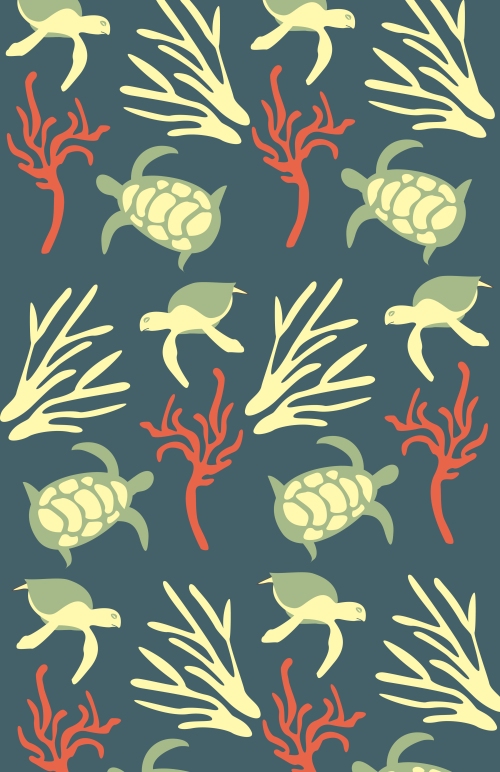New Patterns Save Lives: Final Term Long Project Post
Today, a number of species face extinction and every day is a struggle to keep their kind alive. Such animals a tigers, pandas, polar bears, dolphins, whales, rhinos, great apes, marine turtle and elephants are slowly losing the fight and their place on Earth. The goal of New Patterns Save Lives is to educate and create awareness about animals facing extinction. We as humans need to realized that we share this Earth and if we make little changes in our everyday lives, so many lives of animals can be saved. I developed a series of patterns, each representing a specie facing extinction and are intended to be applied to a variety of merchandise. The merchandise will then be sold with all profits going to the World Wildlife Foundation.
The Patterns:
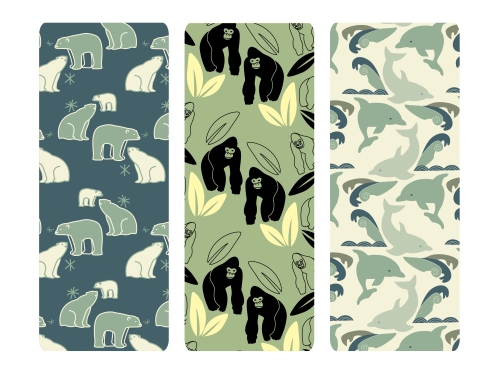
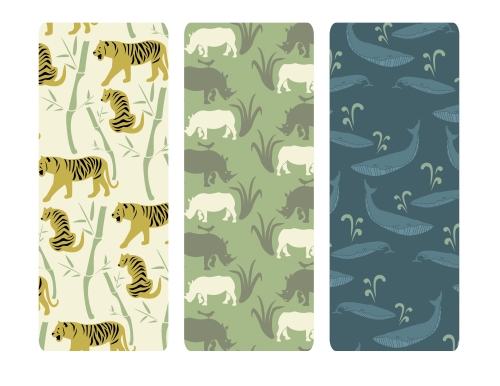
 Surveys:
Surveys:
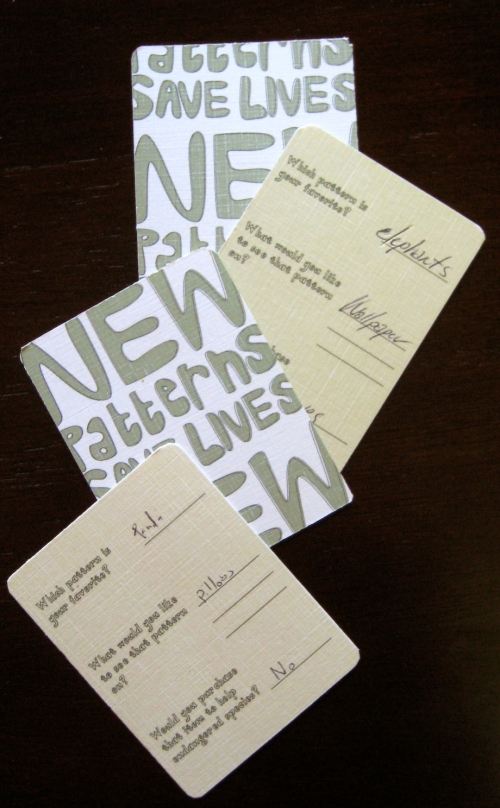
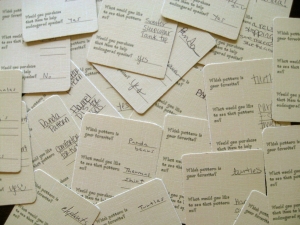
The Merchandise:
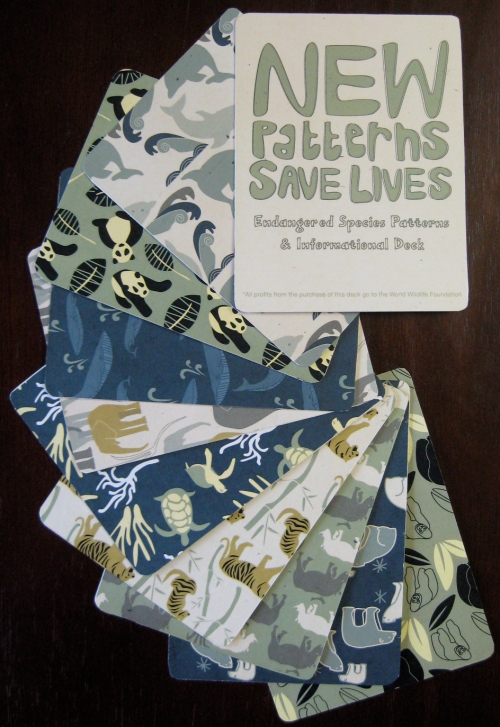

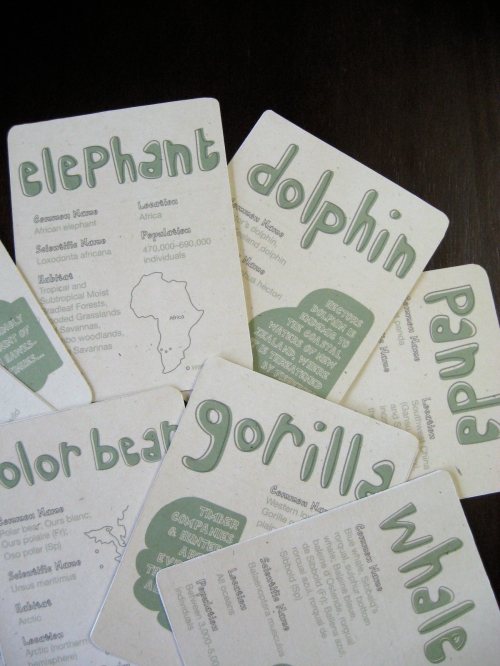

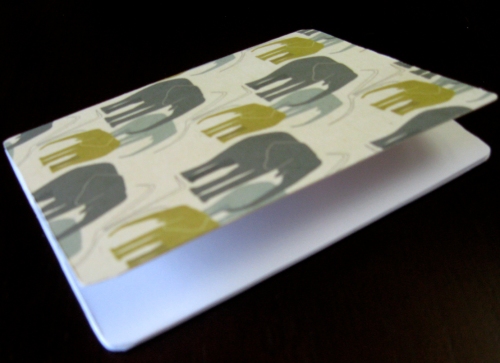
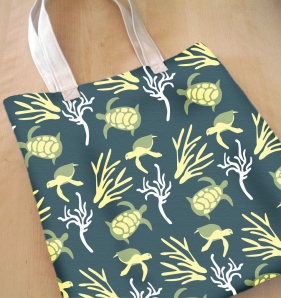
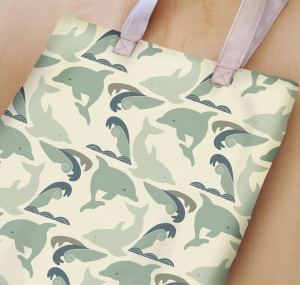
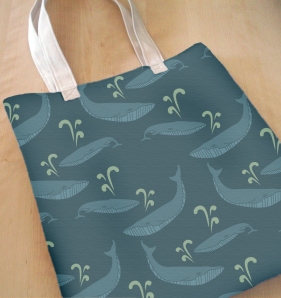
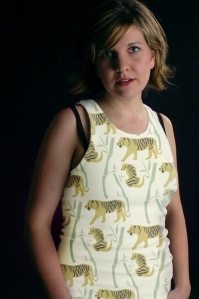
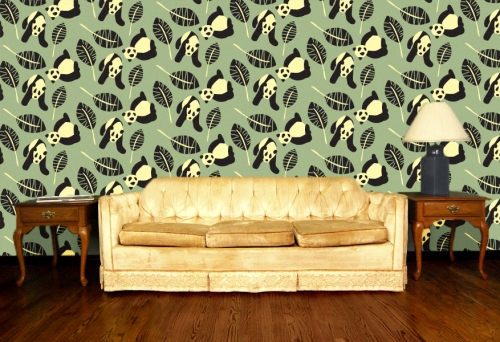
How to be a Graphic Designer Without Losing your Soul (chapters 8 and 9)
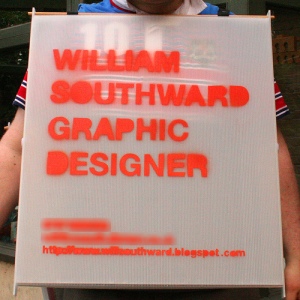

 The last two chapters cover the very important topics of self-promotion and the creative process. Self-promotion is a major issue to consider when it comes to being a graphic designer without losing your soul. You want to earn a reputation in the right way and for the right reasons and this isn’t easy. I like how the book states that “we must not confuse admiration and respect with fame or celebrity.” Designers should not promote themselves like a boy band, rather have a reputation for generating good design and business. The ways in which the book suggests doing this are creating work that’s portfolio worthy, not just work that earns you a lot of money, in some cases enter design competitions, take advantage of professional organizations, attend conferences and lectures and maintain relationships with art colleges. The chapter also covers how to deal with the design press. This involves how much press is too much press and what kind of press is good. “Designers need regular injections of exposure, but don’t let it become a fixation (…) if you want to be famous, the first thing to have to do is stop wanting to be famous.”
The last two chapters cover the very important topics of self-promotion and the creative process. Self-promotion is a major issue to consider when it comes to being a graphic designer without losing your soul. You want to earn a reputation in the right way and for the right reasons and this isn’t easy. I like how the book states that “we must not confuse admiration and respect with fame or celebrity.” Designers should not promote themselves like a boy band, rather have a reputation for generating good design and business. The ways in which the book suggests doing this are creating work that’s portfolio worthy, not just work that earns you a lot of money, in some cases enter design competitions, take advantage of professional organizations, attend conferences and lectures and maintain relationships with art colleges. The chapter also covers how to deal with the design press. This involves how much press is too much press and what kind of press is good. “Designers need regular injections of exposure, but don’t let it become a fixation (…) if you want to be famous, the first thing to have to do is stop wanting to be famous.”
The last chapter was hard for me to read only because some many interpretations of the creative process exist out there and it’s something that has been engrained in us sense the beginning of our design studies. What stood out to me the most in this chapter is the section called criteria for good work. Everyone also has their own interpretation of this, but its good to have it broken down and simplified. The first aspect of good work includes a happy client, if your client isn’t happy, then something isn’t right. The second is whether or not the job was profitable and this covers both financial profitability and profitability in the sense of things that cannot be bought such as exposure or recognition. Next involves the job’s “newsworthiness.” Did the job attract a lot of attention or other work? I though these were all good questions to ask about a project or job, mainly because most designers strive to create good work and having these three simple questions can be really helpful.
How to be a Graphic Designer Without Losing your Soul (chapters 6,7 & 8)
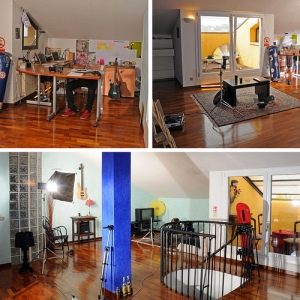 The topics of the these readings included running a studio, winning work, and everything you need to know about clients. Continuing on the idea of working in a studio, chapter 6 covers how to run one successfully. The first and probably most important is finding and employing a good and creative staff. The book mentions that this can be just a difficult as a new designer trying to find a job, the tables have turned! The best piece of advice that the book has to offer on this subject is “always employ people who are better than you.” Once again, I’m amazed by such a simple piece of advice, yet I never would have came up with it. When interviewing a designer the three most important things to think about are talent, sustainability and potential. The book then goes back into the nitty gritty with things like hiring non-design staff and receptionists, things for some reason I can’t bring myself to really think about only because they seem so far away and maybe something I’ll never have to worry about. I guess I just don’t see myself starting my own studio so I tend to zone out when reading such details, though they are important and good bits of information for one who might be.
The topics of the these readings included running a studio, winning work, and everything you need to know about clients. Continuing on the idea of working in a studio, chapter 6 covers how to run one successfully. The first and probably most important is finding and employing a good and creative staff. The book mentions that this can be just a difficult as a new designer trying to find a job, the tables have turned! The best piece of advice that the book has to offer on this subject is “always employ people who are better than you.” Once again, I’m amazed by such a simple piece of advice, yet I never would have came up with it. When interviewing a designer the three most important things to think about are talent, sustainability and potential. The book then goes back into the nitty gritty with things like hiring non-design staff and receptionists, things for some reason I can’t bring myself to really think about only because they seem so far away and maybe something I’ll never have to worry about. I guess I just don’t see myself starting my own studio so I tend to zone out when reading such details, though they are important and good bits of information for one who might be.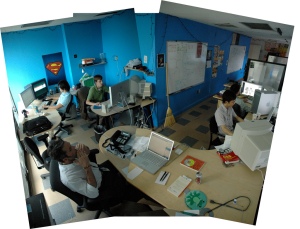
I really enjoyed the chapter about clients. As someone who as worked in customer service for several years now, it’s interesting to look at it from a design/client perspective. The chapter covers how to find, keep and develop clients and suggests to “treat your clients like you treat your friends.” Although it can work being friends with a client, “but there is much to be said for keeping a barrier between intimacy and professional matters.” What I found most helpful is that, clients are not always right and its ok to challenge when they are wrong. Having a client that that is too controlling or “exploitative” needs to be sacked. Having a client that forces you to create bad designs can be harmful to you or your company.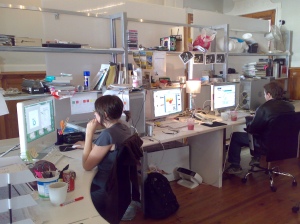
How to be a Graphic Designer Without Losing your Soul (chapters 2,3, and 4)…
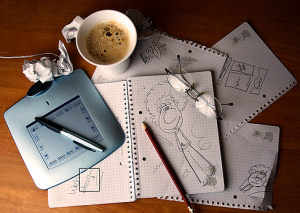 As much as I have been enjoying this book, these three chapters began to stress me out just a little. The chapters brought be back to the real world and reminded me that, unless I want to be a cashier for the rest of my life, I need to find a career once I graduate! The three main topics were how to find a job, being freelance and setting up a studio. As far as finding a job, the book was very real and broke things down to the very basics such as how to approach a design studio, how to conduct a good interview, and even how to follow up. I thought it was interesting how important you choose to initially approach a studio is. If you think about it, it is a first impression and you want that to be the best as possible and the book suggests an old fashion letter, its the “least intrusive method of approach and it allows you to meticulously prepare your proposal.” You just want to make sure you spell the designers name correctly and don’t begin the letter with “Dear Sir or Madam.” This is why this book is so helpful, it breaks EVERYTHING down and really brings to light the little things that are actually the most important.
As much as I have been enjoying this book, these three chapters began to stress me out just a little. The chapters brought be back to the real world and reminded me that, unless I want to be a cashier for the rest of my life, I need to find a career once I graduate! The three main topics were how to find a job, being freelance and setting up a studio. As far as finding a job, the book was very real and broke things down to the very basics such as how to approach a design studio, how to conduct a good interview, and even how to follow up. I thought it was interesting how important you choose to initially approach a studio is. If you think about it, it is a first impression and you want that to be the best as possible and the book suggests an old fashion letter, its the “least intrusive method of approach and it allows you to meticulously prepare your proposal.” You just want to make sure you spell the designers name correctly and don’t begin the letter with “Dear Sir or Madam.” This is why this book is so helpful, it breaks EVERYTHING down and really brings to light the little things that are actually the most important.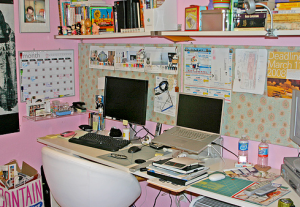
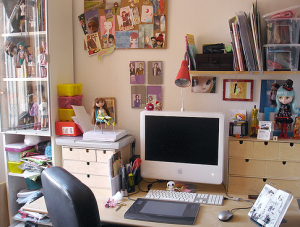
The next chapter covers all aspects of working freelance and states that the freelance life suits two types of designers. “The first type is the very able and resourceful individual with specialist skills” while the second type “is best characterized as the creative loner.” The book isn’t against the freelance life, but make sit very clear that it takes a certain person to succeed and life can get lonely. The plus side of freelance is the fact that you enjoy the flexibility of being self employed, you can work from home, and the financial aspect can be very appealing. The downside would be not having anyone to turn to for help, technical or creative, finding work, and there’s always the fact that you don’t leave the house on a daily basis and you loose out on the everyday changes in visual graphics everywhere. Freelancers also don’t get a guaranteed paycheck every two weeks and face problems like late payments.
Chapter 4 covers everything one would like to know about setting up a studio. This begins with finding a partner/s, ones that you can get along with and trust and work well with creatively and business wise. Partners should complement one another and benefit from one another’s strengths. When setting up a studio, tasks and jobs should be divided up between the partnership, down to who deals with financial affairs, environmental policies, press relations, or IT. The book then goes on to the nitty gritty bits of setting up a design studio. These include how to create a business plan, finding professional advisers and services, finding and office and choosing a name and identity. This is where I started stressing out. There’s so much to think about when setting up a studio and I’m glad I have this book as a reference incase I decide to do so.
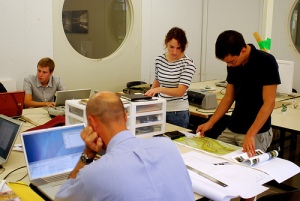
How to be a Graphic Designer Without Losing Your Soul…(forward, intro, and chapter 1)

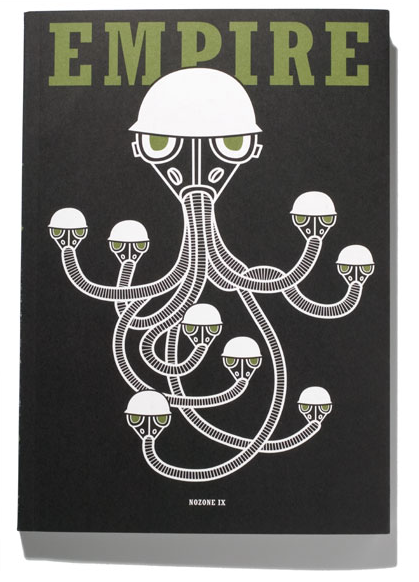
“Graphic design is a visual language uniting harmony and balance, color and light, scale and tension, form and content. But it is also an idiomatic language, a language of cues and puns and symbols and allusions, of cultural references and perceptual inferences that challenge both the intellect and the eye” – Jessica Helfand
So far I love this book and find myself relating to something on every page. They are several things that stand out in the first chapter for me, the quote above being the first. I thought the definition was perfect and as the book says, the first sentence is somewhat logical and not many people would argue with it, but the second sentence touches on all the aspects of graphic design that we have been studying this term and all that graphic design can be. The book is really dedicated to creating an overall definition for graphic design, one that is honest, culturally aware, communicative, and meaningful. The graphic design industry is huge and competitive these days and it’s so easy to be sucked into the money hungry, clawing to the top mentality that so many designers share and that is what this book is trying to prevent. “Every who tells the truth is interesting” -Quentin Crisp. The key to being a good graphic designer is to be “open and forthright.”

The three key attributes that the book finds most important for an successful designer are cultural awareness, communication, and integrity. As far as cultural awareness is concerned, the book states that “without constantly scanning, scrutinizing and absorbing what goes on around you, you cannot become a successful designer.” Good designers are open and educated beyond their own world of design and this becomes important in client relations as well. The book is adamant about being open and receptive with clients in showing that you know about their world as well. When meeting with a potential client, a designer should never sell themselves or abilities or past work.
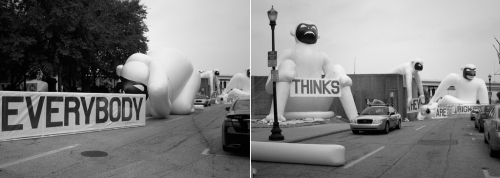
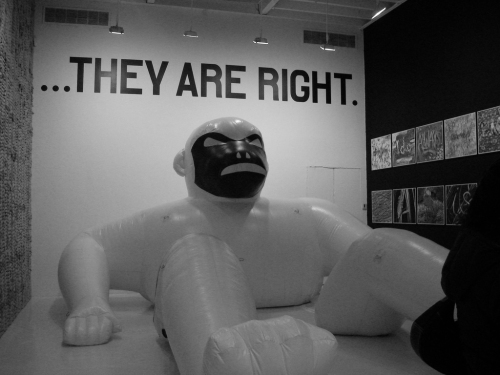
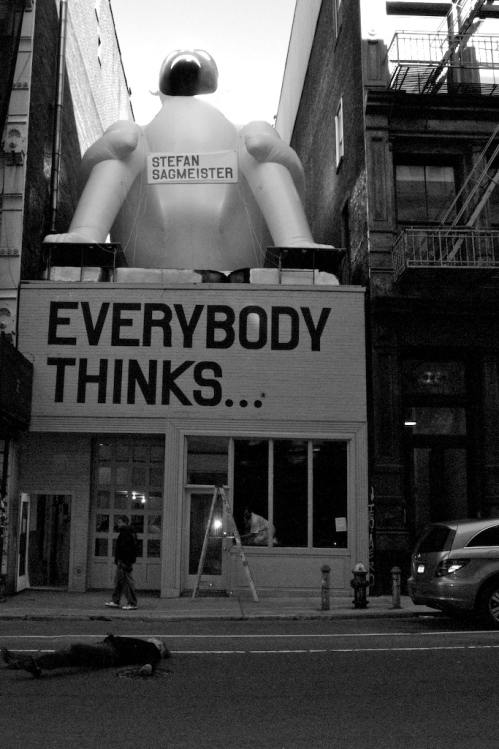
The second attribute is communication which deals mostly with the communication between client and designer. This involves communicating your ideas and listening to your clients needs. It’s important that the designer is able to express their visions to a client, even if the work is not present. This is actually an exercise that book recommends…”tell but don’t show.” How well can you present a project or idea without any physical materials? Allowing the client to have an opinion is also important. “You have to listen very carefully to what the client wants…and be careful not to approach the project with a preconceived idea of what it should look like…”-Rudy VanderLans.
Integrity is a big one and a lot of what this book is about and a lot of which I haven’t thought about before. Integrity doesn’t involve just designer laws and regulations such as copyright or malpractice, but also integrity in the sense of “not losing your soul.” The book brought a few “rules” that aren’t really legal but sort of in the handbook of “designer courtesies.” These involve things like not working with a client in which a fellow designer has or is currently working on or don’t fall for business asking for pitches. As the book states, “no matter how good the pitch, the designer is not addressing the client’s requirements: he or she is merely taking part in a beauty parade” and “by saying no to pitching, studios and individuals are taking a principled stance- they might also be missing out on opportunities, but the respect they get from taking such a stance outweighs the occasional loss of business.”
Personas: Practice and Theory

This idea of “personas” is completely new to me. I really had no idea that such an extensive and detailed extension of audience research existed. The article covered every aspect of how the personas are chosen, created, used, and even marketed and followed the creation of personas for Windows and MSN Explorer. It turns out that a persona is basically a made up character that represents and actual person or customer that would most likely use or benefit from a particular product or service. A company generally creates a set of personas, covering a variety of types of potential customers. The team building the Windows personas focused on six different ones. Because it’s so important to really narrow down the type of character that would use a product, usually there is a department or team of people dedicated solely to developing the personas.
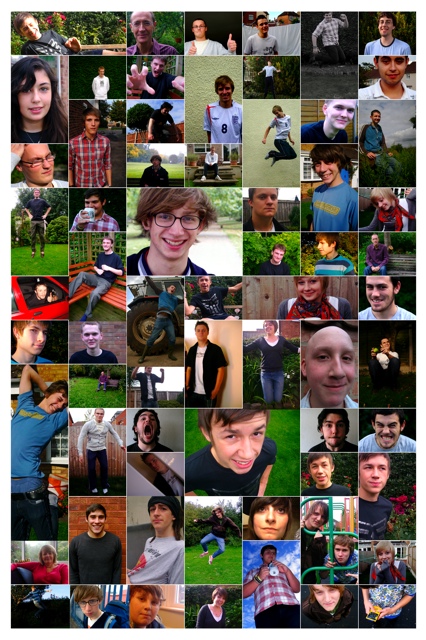
Why spend so much time and energy developing these fictional characters to represent a typical customer or target audience? It’s all about covering the needs off all your customers, no matter how diverse they may be. Having a persona allows for accurate product development and trouble shooting. When a designer has a specific customer to develop for, and a diverse set of them at that, they can design with a variety of scenarios and needs in mind. These “Personas” seem to be a pretty good tool and all the time and energy that goes into developing them can really pay off.
I felt a little stuck so I searched for more inspiration….
I love how simple these are, really relying on line and shape….I think that the cloth itself will have enough texture, I think I want to keep my illustrations very simple and not incorporate texture…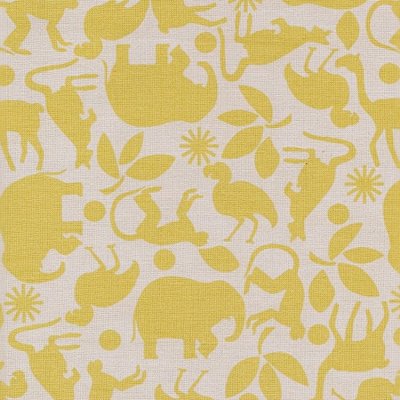
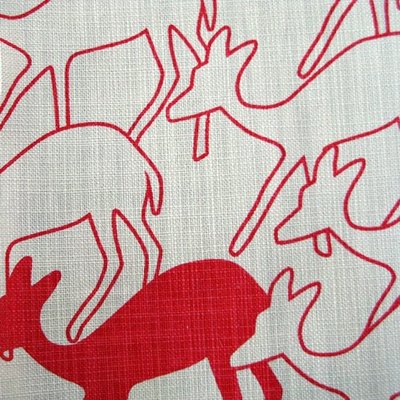
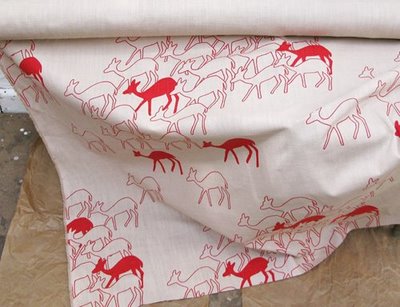

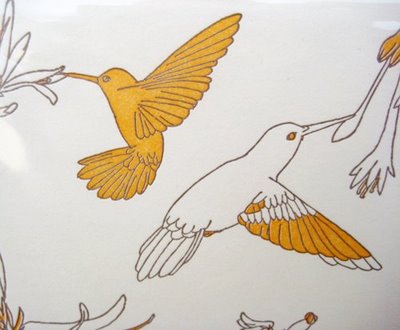

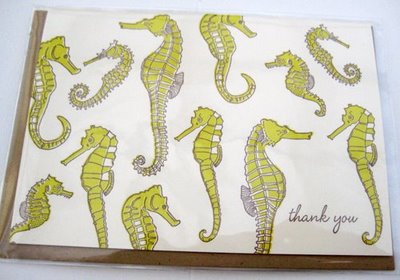
Conveying Emotion Through Design
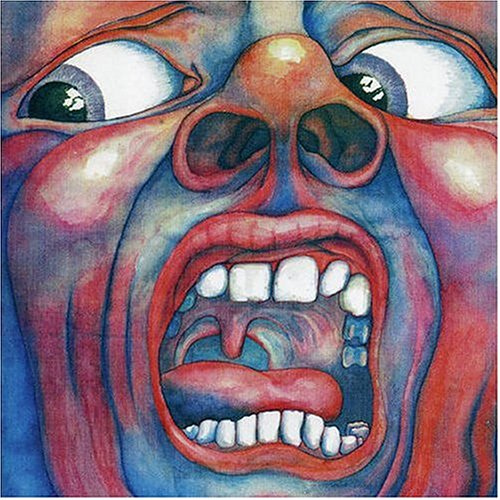 The Sagmeister article was great and really opened my eyes to the importance in which graphic design could hold. In the article Sagmeister really conveys his concern in the lack of true emotional impact that art and graphic design provide these days. On a daily bases people are bombarded pretty things on nice paper or “fluff” a Sagmeister called it; all of which have no meaning nor do they move their viewers. Those that he does find very moving and memorable he lists, and realizes are mostly created by fine artists, not graphic designers. Why does there have to be a difference? What differentiates fine art from graphic design? Sagmeister quotes Brian Eno on his definition of art, one that I really like:
The Sagmeister article was great and really opened my eyes to the importance in which graphic design could hold. In the article Sagmeister really conveys his concern in the lack of true emotional impact that art and graphic design provide these days. On a daily bases people are bombarded pretty things on nice paper or “fluff” a Sagmeister called it; all of which have no meaning nor do they move their viewers. Those that he does find very moving and memorable he lists, and realizes are mostly created by fine artists, not graphic designers. Why does there have to be a difference? What differentiates fine art from graphic design? Sagmeister quotes Brian Eno on his definition of art, one that I really like:
“Don’t think of art works as objects, but as triggers for experiences…art is something that happens, it’s an experience, not a quality.”
By this definition, graphic design can be art and just as moving, as long as it creates an experience. The article goes on to list what qualities art works should have to really touch one’s heart (and I like these too so I’m going to list them for my reference)
- New Perspective: They have the ability to make me see things in a new way.
- Trigger of Memories: Somehow they remind me of an experience, maybe of my childhood.
- Passion and Guts: They show passion and commitment.
- Surprise: There is an element of unexpectedness
- Virtuosity: There is virtuosity of craft or technique-or simply just the astonishment that somebody can be so good at something.
- Beauty: And then there is beauty or whatever I see as beauty.
I feel that the idea behind this article is so simple, but Sagmeister’s language and organization of thoughts really make the idea real and achievable for me. I find myself often attracted to all that “fluff”, because I do think it’s pretty, but I don’t what that to be my inspiration (well maybe inspiration for print techniques or craft, but I agree with Sagmeister that many graphic pieces out there are basically all about the surface and nothing else).
Directed Storytelling
“if the designers desire is to attract and delight customers or audiences for their work, they need to understand the people for whom they design…”
“to do research into an experience… is to experience it”
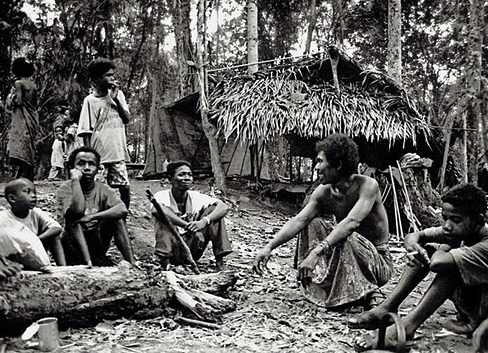
This article begins with the idea of ethnography, a study that focuses on “observing and participating in a culture in order to try and uncover what people are doing and what the doing or activity means to them.” Ethnography is important to designers when finding ways to involve an audience in the design process. The main idea is that as designers, we cannot create a product or outcome for an audience or individual if we don’t understand the world that surrounds or the needs and desires of them. Because a true ethnographic study can be time consuming and costly, the article suggests directed storytelling as a sort of short hand for audience research. In directed storytelling, a narrative structure is provided to guide the conversation and story in the direction in which the designer would like to go and generally the more participants involved, the more rich the research will become.

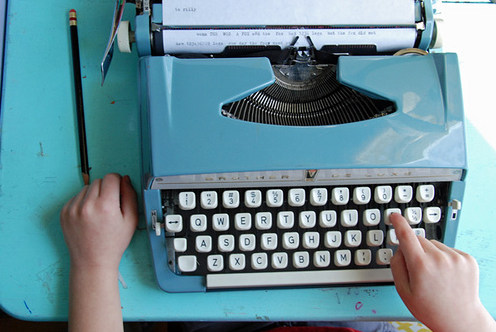
The article reminds me of the translated stories from the Audience as Co-Designer article where two African women told their stories involving their struggles with AIDS. Their tragic stories gave the designers real insight in to the lives and struggles these women faced because they had AIDS, ones that no American could imagine. They were also provided insight on how the women viewed the resources provided for AIDS prevention and treatment.


